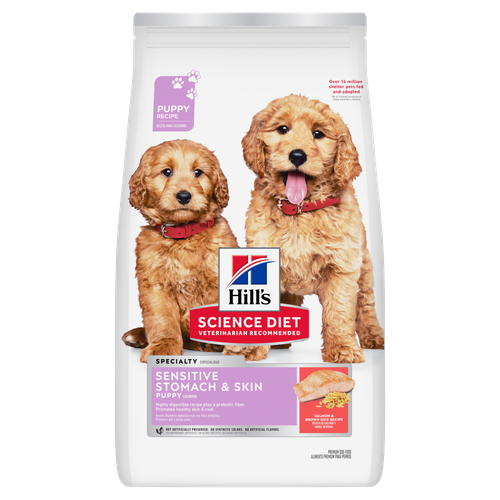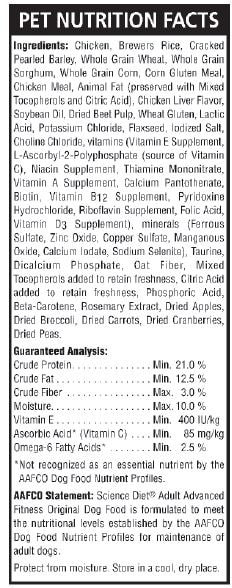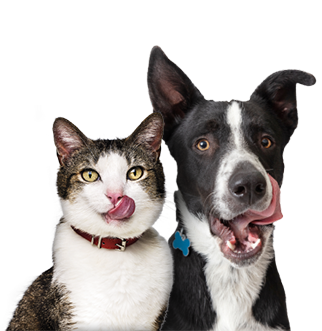
-
Find the right food for your petTake this quiz to see which food may be the best for your furry friend.Find the right food for your petTake this quiz to see which food may be the best for your furry friend.Featured products
 Puppy Sensitive Stomach & Skin Salmon & Brown Rice Recipe
Puppy Sensitive Stomach & Skin Salmon & Brown Rice RecipeDelicious, highly digestible recipe, gentle on stomachs. Nourishes skin & promotes a lustrous coat
Shop Now Puppy Large Breed Chicken & Brown Rice Recipe
Puppy Large Breed Chicken & Brown Rice RecipeVital nutrients to support 5 essential building blocks for lifelong health
Shop Now Adult Chicken & Barley Recipe Dog Food
Adult Chicken & Barley Recipe Dog FoodSupports lean muscle and beautiful coat for adult dogs
Shop NowFeatured products Adult 7+ Chicken Recipe Cat Food
Adult 7+ Chicken Recipe Cat FoodSupports energy level and beautiful fur in mature cats
Shop Now Adult Urinary Hairball Control Chicken & Rice Recipe Cat Food
Adult Urinary Hairball Control Chicken & Rice Recipe Cat FoodActively supports the health of the whole urinary system
Shop Now Kitten Chicken Recipe
Kitten Chicken RecipeVital nutrients to support 5 essential building blocks for lifelong health
Shop Now -
Dog
- Dog Tips & Articles
-
Health Category
- Weight
- Food & Environmental Sensitivities
- Urinary
- Digestive
- Joint
- Kidney
-
Life Stage
- Puppy Nutrition
- Adult Nutrition
- Senior Nutrition
Cat- Cat Tips & Articles
-
Health Category
- Weight
- Skin & Food Sensitivities
- Urinary
- Digestive
- Kidney
-
Life Stage
- Kitten Nutrition
- Adult Nutrition
Featured articles Water
WaterDiscover why water is the most important nutrient for your dog or cat to live a healthy life. Find out how much water your pet should consume each day.
Read More Pet Food Storage Tips
Pet Food Storage TipsDiscover how and where to store your dry, as well as canned, dog and cat food. Learn how to find the "best before" dates on all Hill's pet food packaging.
Read More The Incredible Science Behind Your Pet's Microbiome
The Incredible Science Behind Your Pet's MicrobiomeLearn what a pet's microbiome is, how it contributes to your pet's gut & overall health, and why nutrition is important in maintaining healthy microbiomes.
Read More -


 You've just welcomed a new addition into your home and you're getting everything in order to make your new cat comfortable. Of course, part of the comfort factor is a tasty, healthy cat food. So, you rush to the pet store, check the variety of brands and begin reading cat food labels.
You've just welcomed a new addition into your home and you're getting everything in order to make your new cat comfortable. Of course, part of the comfort factor is a tasty, healthy cat food. So, you rush to the pet store, check the variety of brands and begin reading cat food labels.
What is a pet food label? A pet food label is a legal document regulated by the Association of American Feed Control Officials (AA,FCO) and is the primary means of communication between the pet food manufacturers and pet owners.
Deciphering the label. Now, after reading the label, you're confused — ingredients versus nutritional facts, guaranteed analysis, an endorsement by AAFCO. What does it all mean?
We understand your frustration and confusion. Therefore, we'll try to help you interpret a pet food label so you can make the best purchasing decision for your cat. Let's start at the top:
Ingredients
- The difference between "ingredients" and "nutrients" needs to be clarified. Ingredients are the vehicles that provide nutrients, while nutrients are food components that support life and are metabolically useful. For example, lamb is an ingredient that provides nutrients such as protein, fatty acids and vitamins.
- Ingredients are listed in descending order by weight. The high water content in chicken, beef and lamb makes these ingredients weigh more than dry ingredients such as grains, meals and vitamins, so they are often listed first.
Guaranteed Analysis
- Indicates minimum or maximum levels of nutrients such as protein, fat, fiber and moisture.
- Does not indicate or provide exact levels of nutrients in the cat food.
- Is not a guarantee of the nutritional quality of the cat food.
- Moisture levels in cat foods vary, making it nearly impossible for an average cat parent to accurately ,compare nutritional information.


Tasty Tips
Young pets may need several visits in their first year for vaccinations. Adult pets generally benefit from annual check-ups, while senior or special-needs pets might require more frequent visits.
Nutritional Adequacy Statement or "AAFCO Statement"
- AAFCO is an organization that sets the nutritional standards for pet foods sold in the United States.
- This legally required statement verifies the testing method used to determine nutritional adequacy.
- The statement indicates whether the food provides complete and balanced nutrition for a specific lifestage of your cat (growth, adult, pregnant/nursing), or if the product is nutritionally adequate for all lifestages.
- Beware if the package states the food supports "all lifestages." The product likely contains excessive levels of some nutrients necessary for the most demanding lifestage, which is growth. For example, it might contain higher levels of protein and calcium for kittens, but those levels are inappropriate for an adult or senior cat.
As a cat parent, you should know that nutritional excesses can be as harmful and are more common than nutritional deficiencies.
Manufacturer's Toll-free Number
The package label should contain the manufacturer's name and phone number. We encourage you to call the companies to learn more about their products, including place of manufacturing, actual nutrient content, calories and palatability of your prospective cat food choice.


One of our staff authors prepared this article for you
Related products

Supports energy level and beautiful fur in mature cats

Delicious, highly digestible recipe, gentle on stomachs. Nourishes skin & promotes a lustrous coat

Vital nutrients to support 5 essential building blocks for lifelong health

Vital nutrients to support 5 essential building blocks for lifelong health
Related articles

Discover how antioxidants fight against free radicals in your dog or cat's body, and why they are so important to your pet's diet.

Learn what a pet's microbiome is, how it contributes to your pet's gut & overall health, and why nutrition is important in maintaining healthy microbiomes.

Discover why water is the most important nutrient for your dog or cat to live a healthy life. Find out how much water your pet should consume each day.

Discover how and where to store your dry, as well as canned, dog and cat food. Learn how to find the "best before" dates on all Hill's pet food packaging.

Put your pet on a diet without them knowing
Our low calorie formula helps you control your pet's weight. It's packed with high-quality protein for building lean muscles, and made with purposeful ingredients for a flavorful, nutritious meal. Clinically proven antioxidants, Vitamin C+E, help promote a healthy immune system.
Put your pet on a diet without them knowing
Our low calorie formula helps you control your pet's weight. It's packed with high-quality protein for building lean muscles, and made with purposeful ingredients for a flavorful, nutritious meal. Clinically proven antioxidants, Vitamin C+E, help promote a healthy immune system.

